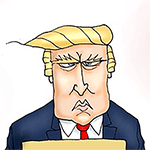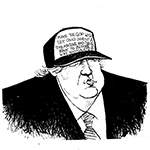Texas redrawing congressional district after feds say maps unconstitutional
Published in Political News
Gov. Greg Abbott’s special session agenda includes the redrawing of congressional districts mid-decade. This comes after the U.S. Department of Justice sent a letter to the governor and attorney general saying three Houston districts and one Fort Worth district are “unconstitutional ‘coalition districts’” and are racially drawn.
A coalition district is one that is predominantly made up of minority voters who tend to vote together.
University of Houston Political Science Professor Brandon Rottinghaus said there’s debate on whether the Justice Departments claims are accurate. Nonetheless, legislators can choose to redraw district lines at any time.
The Fort Worth district, U.S. congressional district 33, was created after the 2012 census and is represented by Democrat Marc Veasey. The three Houston districts are also held by Democrats.
Veasey said in a statement that beginning the redistricting process while floods continue to devastate Texans “is nothing more than a craven power grab and absolutely disgusting.
“This is an order straight from Mar-a-Lago and carried out at the expense of Texans,” Veasey said. “Let’s be clear: this is not about fairness or constitutionality. This is about the Coward-in-Chief, Trump, and his lapdog, Greg Abbott, trying to rig the system because they know they can’t win a fair fight in 2026.”
He said the July 7 letter was part of “a coordinated political stunt, not a legal revelation” and that coalition districts do not violate the Voting Rights Act or the 14th Amendment as the Supreme Court said in 2023. Two days after the letter was sent, Abbott announced 18 items on the special session agenda.
The special session begins on Monday and will also see discussions of Hill Country flooding relief, improvements to emergency warning and communication systems, eliminating the STAAR test and THC regulations.
Veasey said the special session items were tacked on to “disguise this blatant power grab.”
Rottinghaus said it’s hard not to see this as politically motivated because redistricting is often political.
Tarrant County Commissioner Alisa Simmons, a Democrat from Arlington, said on social media that the county’s recent redistricting, which she says was racially gerrymandered, was the test run.
Both redistrictings are occurring mid-decade, when census data is years old. States must redraw maps once every 10 years to account for population changes. Texas drew new maps in 2021.
“Now Republicans want to do it statewide — to protect Trump, gut federal services, break grant promises, and crack and pack minority districts,” Simmons said. “Same playbook. Same voter suppression. We see it. We’re ready.”
So what if the districts are redrawn?
Rottinghaus said the process at the state level is similar to the one seen in Tarrant County earlier this year, except instead of a law firm drawing the maps, a committee of legislators will.
The committee will then present the new map to the chamber for debate and the representatives will take a deciding vote.
“In practice, a lot of what happens is behind the scenes,” Rottinghaus said. “So it’ll be the case that much of the process won’t be in public view, but the outcome will be something that the legislature will definitely debate, and the public will weigh in on.”
While the Justice Department’s letter only highlighted issues with four districts, Rottinghaus predicts the committee will redraw more congressional districts than just those and the neighboring districts.
“Some districts may not be touched because it may be the case that they’re already to the GOP’s liking, but other districts may be changed to make a more clear partisan advantage for Republicans,” Rottinghaus said.
Much like the two-month-long Tarrant County redistricting process, Rottinghaus predicted that the redrawing of the congressional districts will be sped up. The goal is likely to have a new map in place by the November filing deadline so that the new districts will be in place for midterm elections in 2026.
Though Democrats are in the minority in the Texas Capitol, they could disrupt the process by coordinating absences. If there is not a quorum of two-thirds present, voting cannot take place. There would need to be 100 members present in the House of Representatives and 21 members in the Senate.
Some voters may be redrawn into different districts, which, depending on their voting habits, could result in less representation.
“It’s possible that, depending on how the lines are drawn, that communities may be split up so that you’re no longer voting in the same place that you did, or that your community votes,” Rottinghaus said. “That’s another kind of issue, depending on how legal these things are, or how illegal they are. You know, it could be that certain communities, certain like-minded ethnic or racial groups, may be broken up and put in different districts.”
_____
©2025 Fort Worth Star-Telegram. Visit star-telegram.com. Distributed by Tribune Content Agency, LLC.

























































Comments